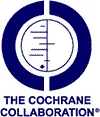Healthy Schools & Drugs - A school-based prevention programme with education, school regulations and early detection components
At a glance
Country of origin
- Netherlands
Level(s) of intervention
- Universal prevention
Healthy Schools and Drugs is a Dutch school-based drug prevention programme that was developed in the late 1980s and disseminated at national level during the 1990s. In 2014 it was used in approximately 70% of Dutch schools. In 2020 some of its components were adapted and the programme was renamed (Helder op School). The programme consists of five major components which are adopted and implemented over a 3 year period: a coordination committee (coordinates activities), educational lessons for 12-15 year old (only three lessons each year), school regulations, early detection in school and parent involvement.
Keywords
No dataLinks to this programme in other registries
Implementation Experiences
Read the experiences of people who have implemented this programme.Contact details
Trimbos Institute
The Netherlands
https://www.trimbos.nl/
Overview of results from the European studies
Studies overview
The programme has been evaluated in one cluster-randomised trial (RCT) and in one quasi-experimental design in The Netherlands. An adapted version for special education students was studied in a quasi-experimental trial.
The first evaluation study (QED) (Cuijpers et al. 2002) enrolled five regions of municipal health services in the Netherlands. In order to be included in the study, schools had to have an active committee coordinating the drug prevention activities at the school. Students of nine experimental (N = 1156) schools were compared with students of three control schools (N = 774). The groups were compared before the intervention started, 1 year later, 2 years later and 3 years later. The primary outcomes were self-reported frequency of and lifetime use of tobacco, alcohol and marijuana. Two years after the start of the intervention, only effects on alcohol use were found. There was no clear evidence for any effects on attitude towards substance use and on self-efficacy. A secondary analysis studied differential effects in various segments of the student population (Smit et al., 2003). Multivariate logistic regression analysis showed that the effect of the intervention on alcohol use was less favourable in students who disliked school.
The RCT (Malmberg et al. 2014) studied two intervention conditions: the integral programme compared to a limited e-learning module. Structured digital questionnaires were administered pre-intervention and at 32 months follow-up. The primary outcome measures were new incidences of alcohol (life-time and 1-month prevalence), tobacco (life-time and 1-month prevalence) and marijuana use (life-time prevalence). There were no statistically significant intervention effects on any outcome. The study concluded that the programme was either ineffective or implemented inadequately. A secondary analysis (Malmberg et al. 2015) explored whether boys, adolescents of lower educational backgrounds, or adolescents high on personality risk traits would benefit more from the HSD program than others. The results showed that sex, education level and personality characteristics of the participants did not moderate the intervention effects.
A QED (Turhan et al. 2017) aimed at studying HSD’s effectiveness on tobacco and alcohol use in Dutch secondary special education (SE) schools, and whether this depends upon subtypes of SE schools and the level of implementation. Thirteen secondary SE schools spread throughout the Netherlands participated. 363 students were allocated arbitrarily or depending on teacher motivation to either intervention condition (n = 205) or usual curriculum (n = 158). There was no clear evidence for any effects on attitude towards substance use or self-efficacy. While no effects of HSD-SE were found for SEL (learning disabilities/developmental disorders) students, significant adverse effects were found in SEB student (behavioural/emotional difficulties) on both a cognitive and a behavioural alcohol-related outcome measure. SEB students distinguish themselves from SEL students in displaying more oppositional and defiant behaviour, leading to counteracting peer interactions during class. The pilot study concluded that within special education, substance use interventions may need to be targeted at school subtypes, as these may have harmful effects among students with behavioural difficulties.
Although HSD includes a parent component (conference providing parenting skills specifically relevant for preventing alcohol and tobacco use) this is not evaluated in any of the above studies. Nevertheless, Koning et al. 2009 demonstrated in a RCT that combining only the alcohol module of the HSD (student component) programme with a brief parental meeting (parent component) that was integrated in an existing general parents’ meeting at the beginning of each school year (year 1, 2 and 3 in high school) was effective. That is, onset of weekly drinking was postponed up to 52 months after baseline through an increase in strict rule-setting about alcohol and adolescents’ level of self-control. The student only or parent only components were not effective. This was different from the original HSD program in three ways 1) only alcohol use was a target, 2) parents meeting was integrated in general parents meeting which yielded high attendance rates and 3) a school committee, regulations and early detection were not included., in which parental rule-setting behaviour was encouraged as an effective strategy, helped to reduce adolescents’ alcohol use. The latter study was not included in the Xchange evaluation because it is not considered the core of the HSD programme.
Countries where evaluated
- Netherlands
Characteristics
Protective factor(s) addressed
- Individual and peers: refusal skills and decision making
- Individual and peers: positive self-concept and self-efficacy
Risk factor(s) addressed
- Individual and peers: early initiation of drug/alcohol use
- Individual and peers: favourable attitude towards alcohol/drug use
- Individual and peers: hyperactivity
- Individual and peers: sensation-seeking
Outcomes targeted
- Emotional well-being
- Emotion regulation, coping, resilience
- Alcohol use
- Use of illicit drugs
- Smoking (tobacco)
Description of programme
The programme consists of five major components which are adopted and implemented over a 3 year period: a coordination committee (coordinates activities), educational lessons for 12-15 year old (only three lessons each year), school regulations, early detection in school and parent involvement.
The core components consist of three classroom based sessions for juniors during three consecutive years. Juniors received information on the substances and their use (respectively tobacco, alcohol and cannabis over the course of three years), were encouraged to reflect on their own attitude towards drug use, adjust their risk perception, understand the role of peer pressure and their own social competence (i.e. self-esteem, refusal skills) in relation to starting or experimenting with drugs. Finally, students were encouraged to improve their decision-making skills. Parental involvement was targeted with a non-mandatory conference for parents.
The HSD programme adapted for special education (HSD-SE) included a series of eight classroom lessons, supported by teacher training and booklets for students with language levels adapted to the reading skills of the students.
HSD is based on the ASE model (Attitude, Social influence, Self-efficacy) which is derived from the theory of planned behaviour (Ajzen & Fishbein 1990), Bandura’s social cognitive theory (Bandura 1996) and McGuire’s model of behavioural change (McGuire 1985). This model explains intention of and behaviour by distinguishing three main determinants: attitude (a person’s judgment of possible behaviour), social influence (composed of opinions and expectations others have towards the behaviour) and self-efficacy (Cuijpers et al. 2002).












